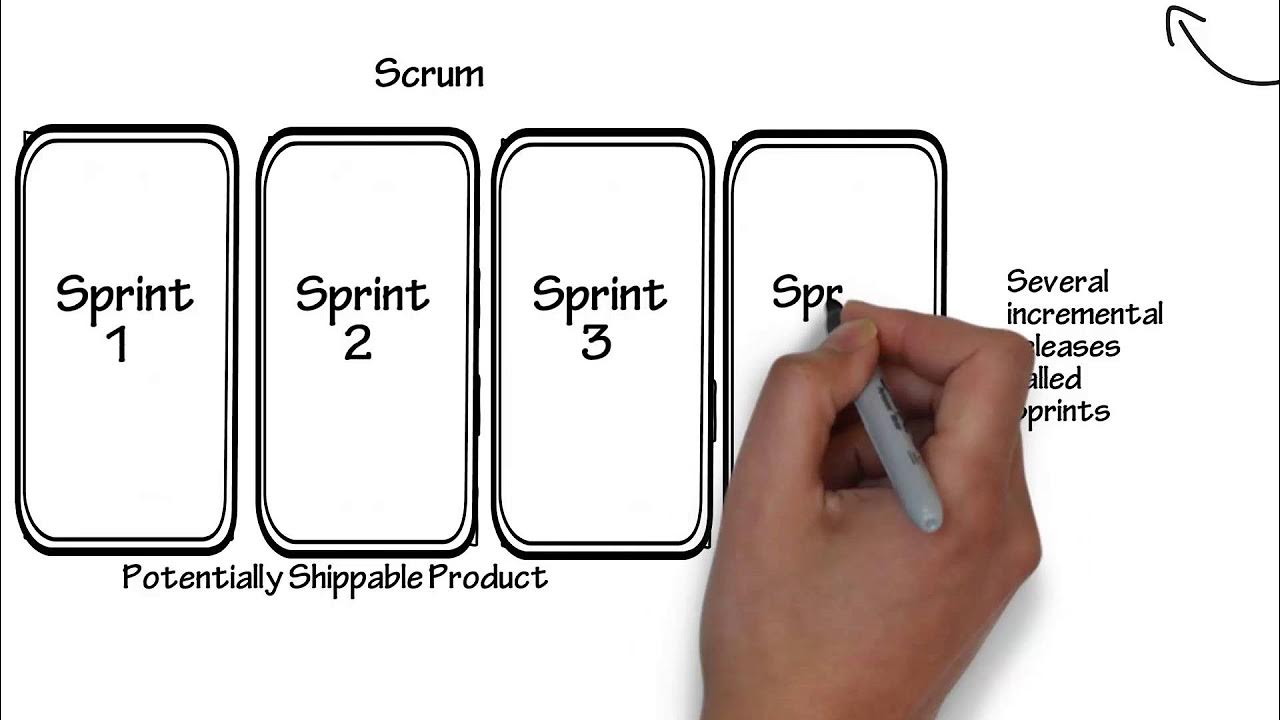Sprint Planning in Scrum | Agile & Scrum basics explained by Sohrab Salimi
Summary
TLDRThis video offers a comprehensive guide to conducting a successful sprint planning meeting in Scrum. It emphasizes the importance of having a well-prepared product backlog and outlines the three key steps: establishing the sprint goal (the 'why'), selecting items for the sprint backlog (the 'what'), and discussing the technical approach (the 'how'). The video also advises the Scrum Master's role in facilitating the process and suggests the product owner's involvement in the first two steps, while the developers make the final decisions on work commitment.
Takeaways
- 📅 Sprint Planning Time Box: The maximum time dedicated to a sprint planning meeting is eight hours for a four-week sprint, with shorter sprints having proportionally less time.
- 👥 Participants: The sprint planning meeting involves the product owner, developers, and the scrum master, with stakeholders invited if they can contribute constructively.
- 🚫 Scrum Master's Role: The scrum master should intervene if stakeholders challenge the priority set by the product owner and developers during the meeting.
- 🛠 Preparation: A well-prepared product backlog refinement is crucial for a successful sprint planning meeting.
- 🎯 Sprint Goal: The 'why' of sprint planning is to establish a sprint goal, which defines the purpose and desired outcome for the customers.
- 📝 Sprint Backlog Selection: The 'what' involves developers choosing which items from the product backlog to include in the sprint backlog based on their capacity.
- 🔍 Technical Discussion: The 'how' is a technical discussion among developers to create a shared understanding of how to approach the selected work.
- 👨💻 Developer Authority: It is the developers' decision to determine how much work can be completed within a sprint, not the product owner's.
- 👀 Product Owner Involvement: The product owner should be present during the first two steps of sprint planning and available for the third step if needed.
- 🔄 Follow-up Actions: After the sprint planning, there may be follow-up tasks such as gathering feedback from stakeholders or informing them about selected items.
- 🛑 Stakeholder Behavior: Stakeholders must respect the process and not disrupt the agreed priorities during the sprint planning meeting.
Q & A
What is the primary purpose of a sprint planning meeting?
-The primary purpose of a sprint planning meeting is to plan the work for the upcoming sprint, including setting a sprint goal and deciding which items from the product backlog will be included in the sprint backlog.
Who are the typical participants in a sprint planning meeting?
-The typical participants in a sprint planning meeting are the product owner, the developers, and the scrum master. Stakeholders may also be invited if they behave constructively and respect the decisions made during product backlog refinement.
What is the time box for a sprint planning meeting for a four-week sprint?
-The time box for a sprint planning meeting for a four-week sprint is eight hours, which is the maximum amount of time dedicated to the event.
How does the time box for a sprint planning meeting change for a two-week sprint?
-For a two-week sprint, the time box for the sprint planning meeting is usually around four hours, which is proportionately less than for a four-week sprint.
What is the significance of the sprint goal in the context of a sprint planning meeting?
-The sprint goal is significant as it provides the purpose of the sprint, outlining the desired outcome for the customers, rather than focusing on the output or the number of items delivered.
What is the role of the developers in selecting items for the sprint backlog during the sprint planning meeting?
-The developers have the decision-making authority to select which items from the product backlog will be included in the sprint backlog, based on how much work they believe can be accomplished within one sprint.
What is the purpose of the 'how' step in the sprint planning meeting?
-The 'how' step is a technical discussion among the developers to identify and create a shared understanding of how they want to approach the work they have selected to deliver in the particular sprint.
Why might a product owner choose to participate in the 'how' step of the sprint planning meeting?
-A product owner might choose to participate in the 'how' step to be close by and available to answer any questions that arise during the technical discussion, ensuring a clear understanding of the product requirements.
What kind of follow-up work might be necessary after the sprint planning meeting?
-Follow-up work after the sprint planning meeting could include checking for feedback from stakeholders and informing them about which items were selected by the developers for the sprint.
How can a scrum master assist the team in conducting a good sprint planning meeting?
-A scrum master can assist by ensuring that the meeting stays within the time box, facilitating the discussion, and helping to maintain focus on the sprint goal and the selection of items for the sprint backlog.
What should a scrum master do if stakeholders challenge the priority during the sprint planning meeting?
-If stakeholders challenge the priority during the sprint planning meeting, the scrum master should interrupt them and remind them that the meeting is not the place for such discussions, as the priorities were agreed upon during product backlog refinement.
Outlines

此内容仅限付费用户访问。 请升级后访问。
立即升级Mindmap

此内容仅限付费用户访问。 请升级后访问。
立即升级Keywords

此内容仅限付费用户访问。 请升级后访问。
立即升级Highlights

此内容仅限付费用户访问。 请升级后访问。
立即升级Transcripts

此内容仅限付费用户访问。 请升级后访问。
立即升级浏览更多相关视频

Scrum Explained Under 20 Mins | What Is Scrum? | Scrum Master Training Tutorial | Simplilearn

What Is Scrum? (An Agile Cartoon)

Scrum in 20 mins... (with examples)

🔴 Running a Scrum Sprint STEP-BY-STEP | Practical Guide to Sprints in Scrum

Introduction to Scrum - 7 Minutes

What's the difference between Agile and Scrum?
5.0 / 5 (0 votes)
